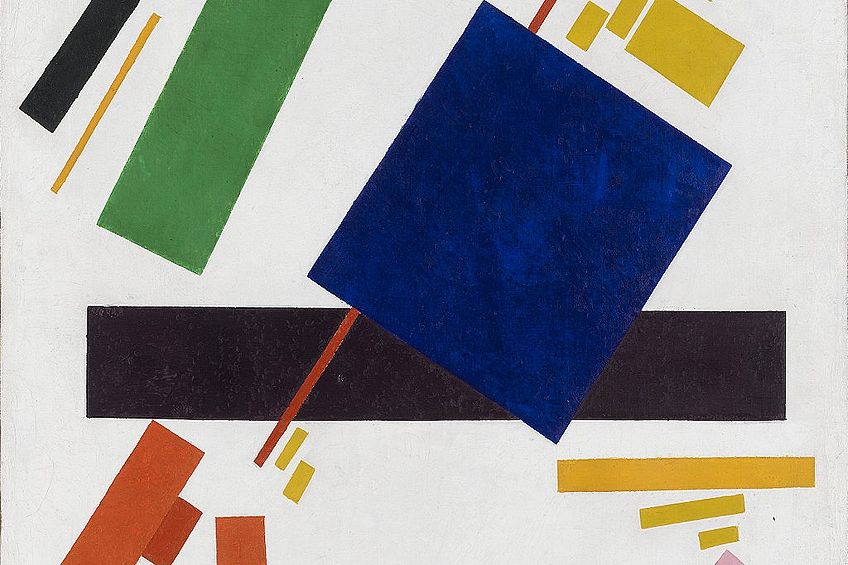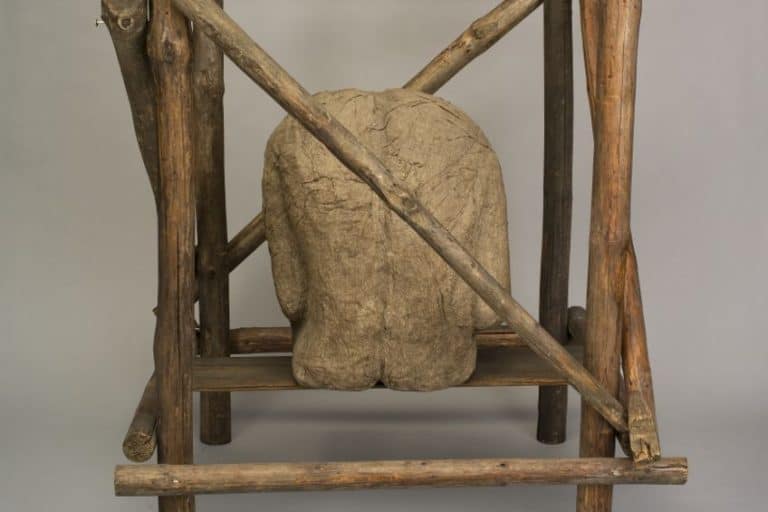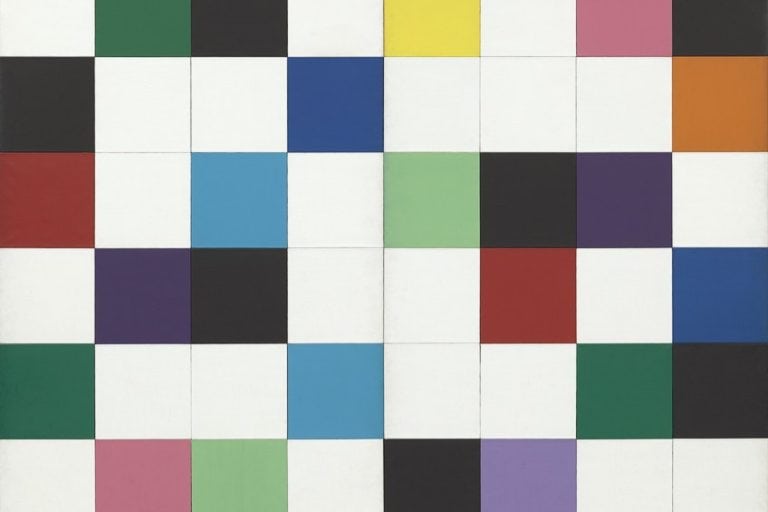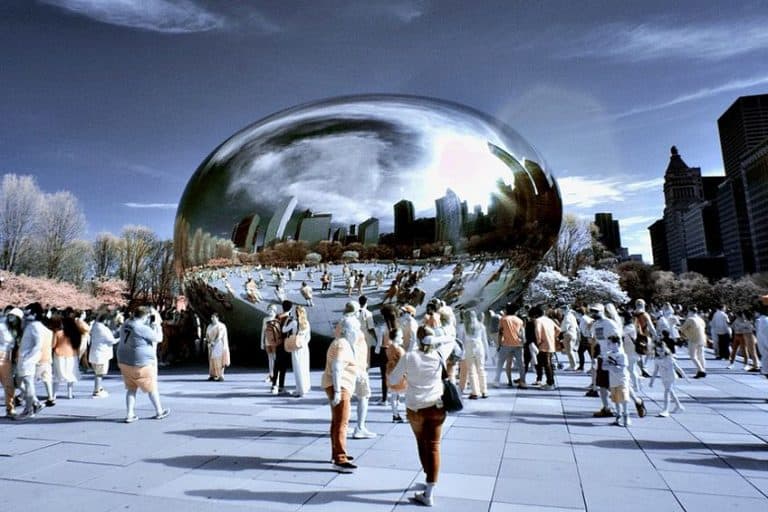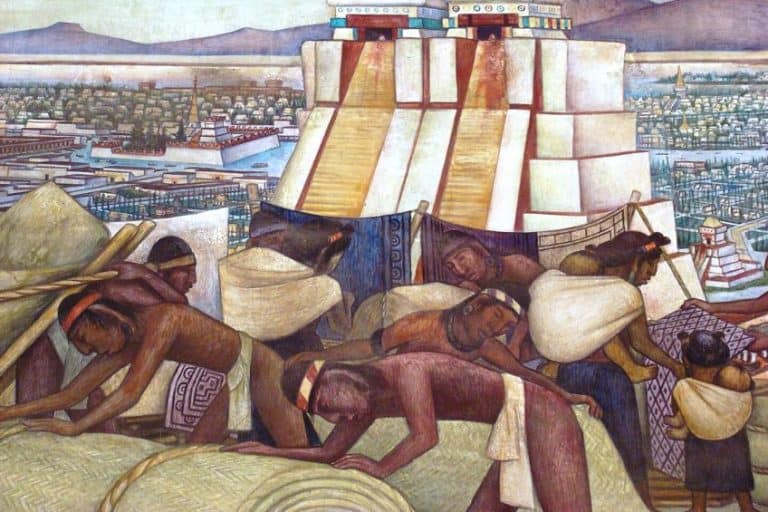Abstract Artists – Who Were the Most Famous Abstract Artists?
Beginning in the early 20th century, the Abstract Art movement managed to introduce different types of abstraction into the main painting style that dominated the artistic world at the time. Seen as an avant-garde style, Abstract Art went on to become very influential in the formation and development of art that was nonrepresentation and essentially considered to be “pure art.” Despite initially shocking audiences, Abstract Art became more acceptable, with mere colors and shapes being used as the central motifs in the works that were created.
A Brief History of the Abstract Art Period
Abstract Art was an incredibly notable movement due to its complete departure from reality. Images that were depicted were entirely non-figurative and non-objective, as no concrete reference to anything remotely real or representational was made in the artworks created. Within art history, some earlier movements began to veer in the direction of abstraction, including Romanticism, Impressionism, and Expressionism. The artworks that were made in this era placed a greater focus on visual sensation as opposed to the portrayal of objects.
Abstraction as an artistic style helped with the materialization of the concept of “art for art’s sake”, which was the belief that paintings and sculpture should free themselves from all external meanings. Thus, Abstract artists created art with the notion that their works should exist simply to be enjoyed for what they were. Concentration was placed on the substance of art itself, as artworks emphasized the elements of material, texture, line, tone, color, and composition over accurate depictions during this era.
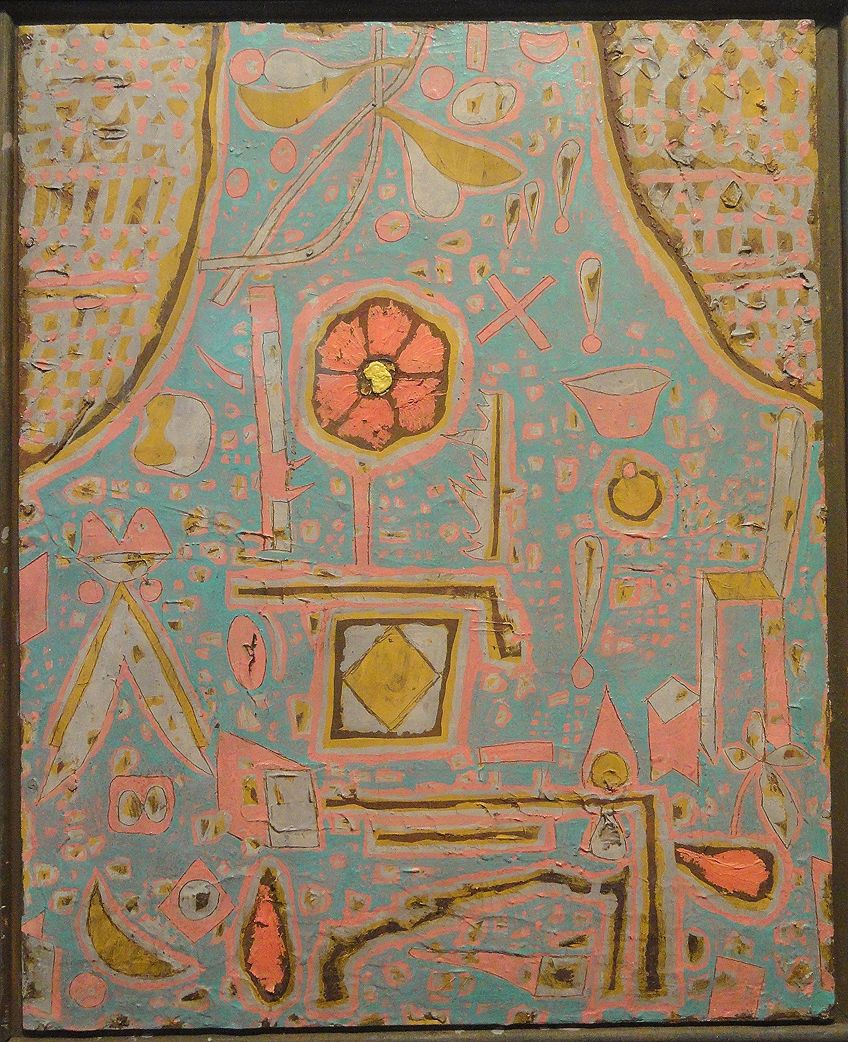
Representing a crucial moment in modernism, Abstract Art was driven forward by many pioneering artists who believed that the emotion present within an artwork was the most crucial aspect. Acting as a catalyst for the emergence of Contemporary Art, Abstract painters were quick to reject the rules that governed traditional art as artworks created merged the concepts of both abstraction and surrealism. This paved the way for artists to move away from realistic depictions in favor of figurative works.
The arrival of the 20th century saw a revolution within the art world, as artists became independent from the visual world through the use of abstractedness in their artworks. Despite it being more than a century since the dawn of Abstract Art, the movement has remained an important aspect within the continuously evolving Contemporary Art world.
The impact of abstraction was monumental, as it brought about a fundamental shift within the history of art that is still seen today.
Our Top Ten Most Famous Abstract Artists
Existing as influential figures within Abstract Art as well as various other art movements, a significant number of Abstract painters are still spoken about today. Their numerous paintings have remained iconic pieces of art, which has led to some Abstract artists standing out greatly. While many artists can be included within this ranking, we will now explore our top ten list of Abstract artists whose artworks and reputations have stood the test of time.
Wassily Kandinsky (1866 – 1944)
Considered to be the most famous Abstract artist of all time, Russian painter Wassily Kandinsky was viewed as the leading pioneer of the entire Abstract genre. Kandinsky initially studied law and economics before he gave up academics and began painting studies, which included life-drawing, sketching, and anatomy depictions, at the age of 30. Rising to fame during the 1910s, Kandinsky is remembered as a leading figure within the development of Modern Art, with his artworks existing as the earliest Abstract paintings to be produced.
Although pursuing figurative art before 1913, Kandinsky was noted as the first Abstract modern artist to fully and freely use pure abstraction within the artworks he created. Credited as the creator of the very first modern Abstract painting to ever exist, Kandinsky has produced many notable pieces throughout his career, with a few paintings remaining incredibly remarkable. These paintings include Untitled (First Abstract Watercolor) (1910), Composition VII (1913), Farbstudie Quadrate (1913), and On White II (1923).
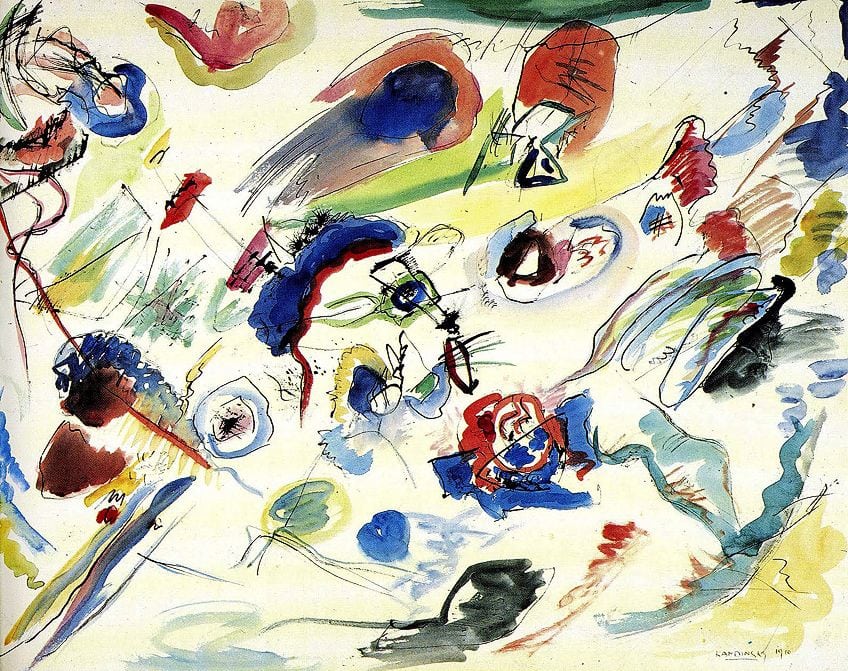
Kandinsky claimed that he was compelled by an “inner necessity” when painting, which required him to remain indifferent to recognized and unrecognized forms and to only paint what he truly felt in the moment. Within most of Kandinsky’s Abstract paintings, his nonrepresentational figures took the shape of random geometric forms that were juxtaposed with shapes, hovering lines, and vivid colors.
Believing that color could be independent of all exterior references, Kandinsky experimented with color in such a way that it became a mere subject within his artworks. Painting was very spiritual for Kandinsky, as he tried to impart a profound sense of human emotion through his abstracted forms and vibrant colors. He believed these elements were able to surpass different cultural and physical limitations, making his works accessible to everyone.
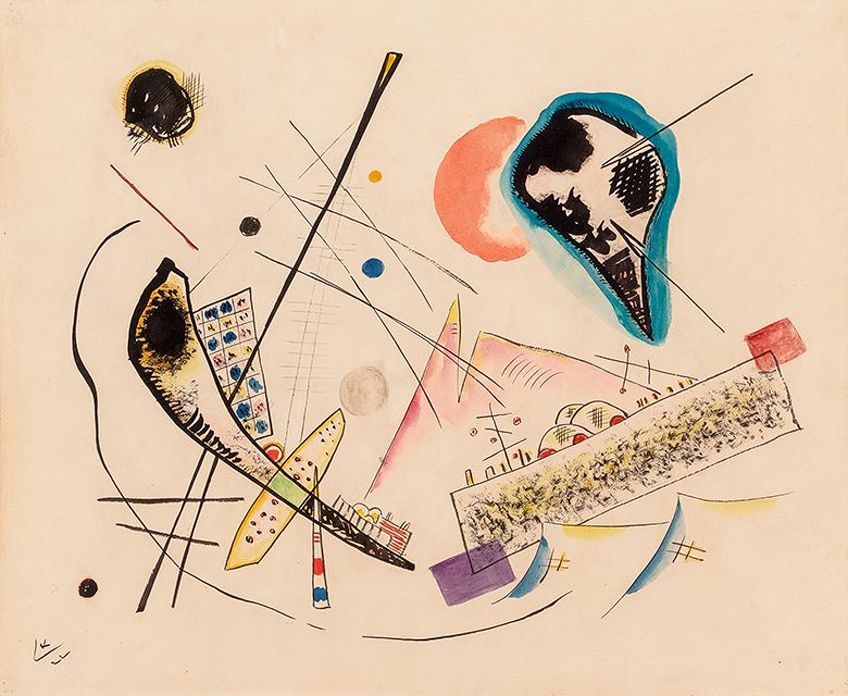
Music also formed an essential part of Kandinsky’s work, as he saw it to be the most unparalleled form of non-objective art. He believed that music was able to express universal emotions and ideas in ways that other visual languages could not, with Kandinsky seeing it as his mission to share these ideas with the rest of the world. This led to him naming some of his more impulsive and intricate artworks as “compositions”.
In addition to being an Abstract artist, Kandinsky was a prominent member of the Der Blaue Reiter group during the German Expressionism movement, which was said to be inextricably linked to abstract painting. Kandinsky was also a professor at the Bauhaus school until it was forced to close by the Nazis leading up to the start of World War Two.
Throughout his career, Kandinsky’s manipulation of vibrant colors and forms influenced the development of Abstract Art, with his contributions leading him to be seen as the “Father of Abstract Art”.
Piet Mondrian (1872 – 1944)
Dutch artist Piet Mondrian was among the most famous Abstract artists during the movement’s peak, as he was considered to be a significant innovator of Abstract Art. Initially experimenting with figurative styles in his earlier works, Mondrian quickly transitioned into an extremely abstracted style as he began to make use of solid geometric shapes in his artworks.
As the son of a painter, Mondrian grew up being taught how to draw by his father. However, he only began to properly pursue painting as an adult and embraced Abstract Art after the end of World War One. Never once depicting any religious figures, Mondrian’s art became notable for the unique grid style of painting that he created.
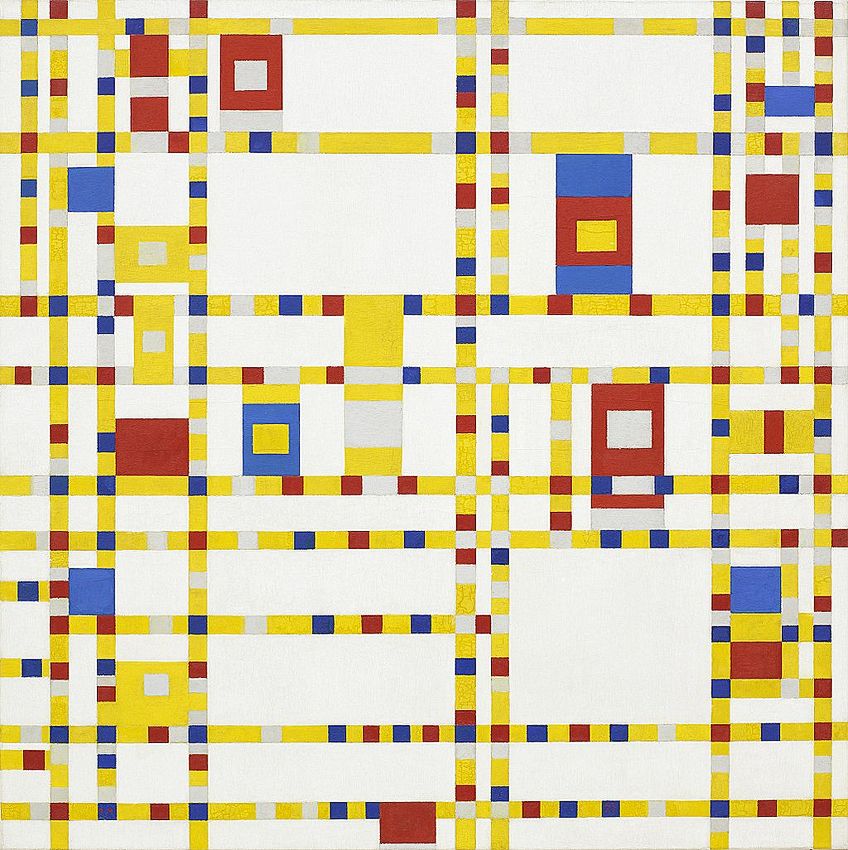
Mondrian’s use of squares, lines, and robust colors saw him becoming the most influential contributor to the De Stijl movement, as his artworks promoted the use of pure abstraction through reducing essential aspects relating to form and color. Thus, the majority of Mondrian’s artworks consist of very structural and nonrepresentational forms that have been highlighted in basic primary colors.
Some of his most notable works include Broadway Boogie Woogie (1942 – 1943), Composition with Red, Yellow, and Blue (1937 – 1942), and Composition II in Red, Blue, and Yellow (1930). By just examining the names given to his paintings, Mondrian’s preference for the primary colors of red, yellow, blue, as well as the inclusion of black, gray, and white within his works becomes known.
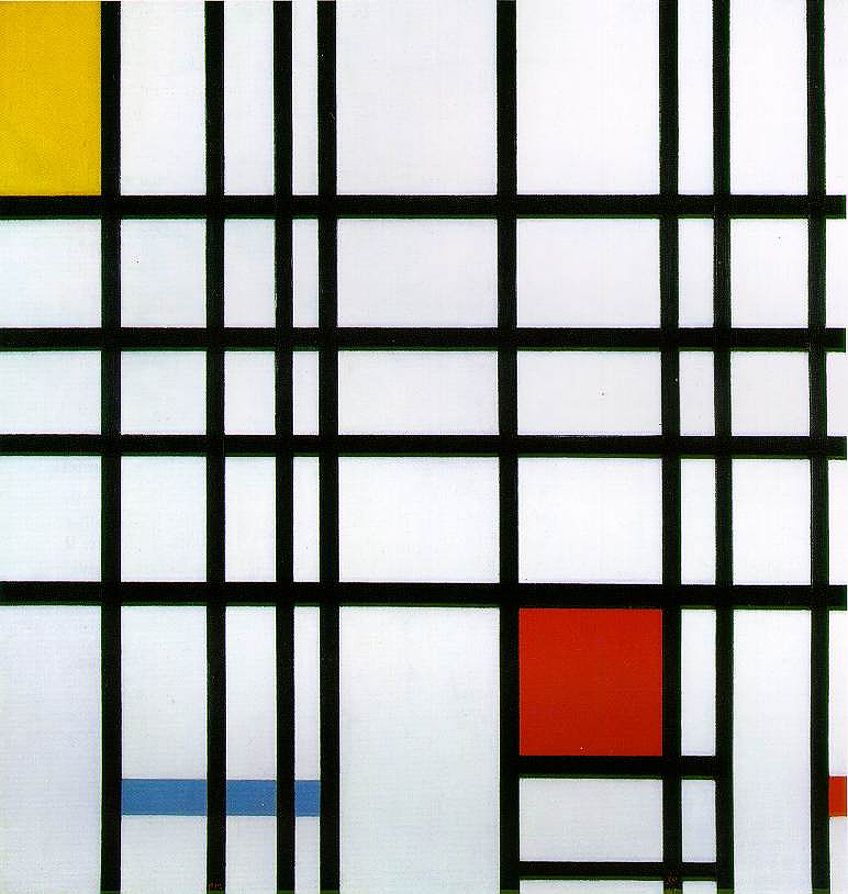
Through using this style of geometrical abstraction, Mondrian coined the term “neoplasticism” to describe his Abstract artworks, which only made use of straight lines, three primary colors, and three neutral tones. As the De Stijl movement gained in popularity, Mondrian became well-known for his focus on the simplification of form and tone within his artworks.
This led to Mondrian becoming an important leader in the progression of Abstract Art, as his iconic style went on to later influence the development of the Bauhaus movement and the Minimalist movement. These genres were both based on Mondrian’s work, with Bauhaus making use of oversimplified lines and color theory, while Minimalism focused on geometric forms and a limited color palette.
Mondrian’s methodical use of vertical and horizontal elements allowed his artworks to evolve in a logical manner, with his development of Neoplasticism going on to become a key proponent in Abstract Art. It took Mondrian a few years of experimentation until he found his iconic style in the early 1920s, which went on to be seen as a new method for illustrating modern reality.
Kazimir Malevich (1878 – 1935)
When considering influential Russian Abstract artists who have helped define the movement, Kazimir Malevich is an important addition to the list. Malevich is mostly known for being the artist who paved the way for Suprematism, which focused on basic geometric forms like circles, squares, rectangles, and lines that were painted with a limited choice of colors. As he experimented with this movement, Malevich began to develop his use of radical abstraction, which led to his artworks becoming important pieces within Abstract Art.
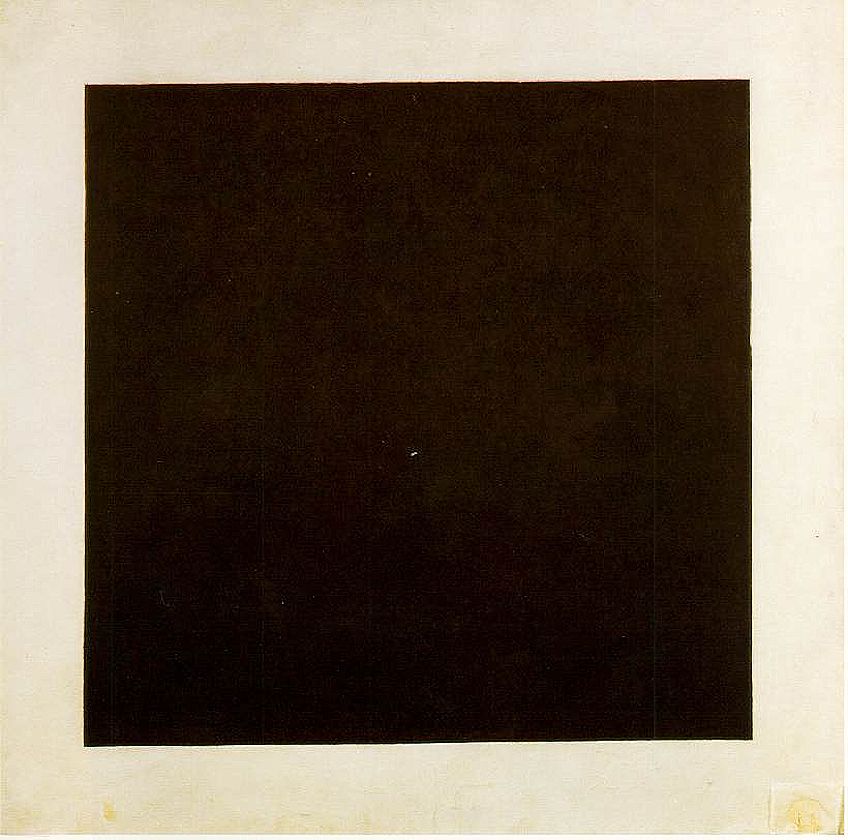
In 1915, after Kandinsky’s rise to popularity, Malevich followed in his footsteps and renounced representational painting as a whole. This led to Malevich developing a style that placed its focus on the importance of pure feeling and the reduction of pictorial scenes, which became known as Suprematism. The emergence of this style was regarded as the new painterly version of realism and allowed Malevich to make use of a reductive method in his artworks.
Despite working with a variety of art styles, Malevich spent most of his career exploring the avant-garde genre of Suprematism. He included his own thinking and understanding of the concept of painting within his artworks, as he believed that true shapes and color had the ability to reign “supreme” over the images and stories being created. Malevich’s most notable artworks all make use of the Suprematist style and include Black Square (1915), Suprematist Composition (1916), and White on White (1918).
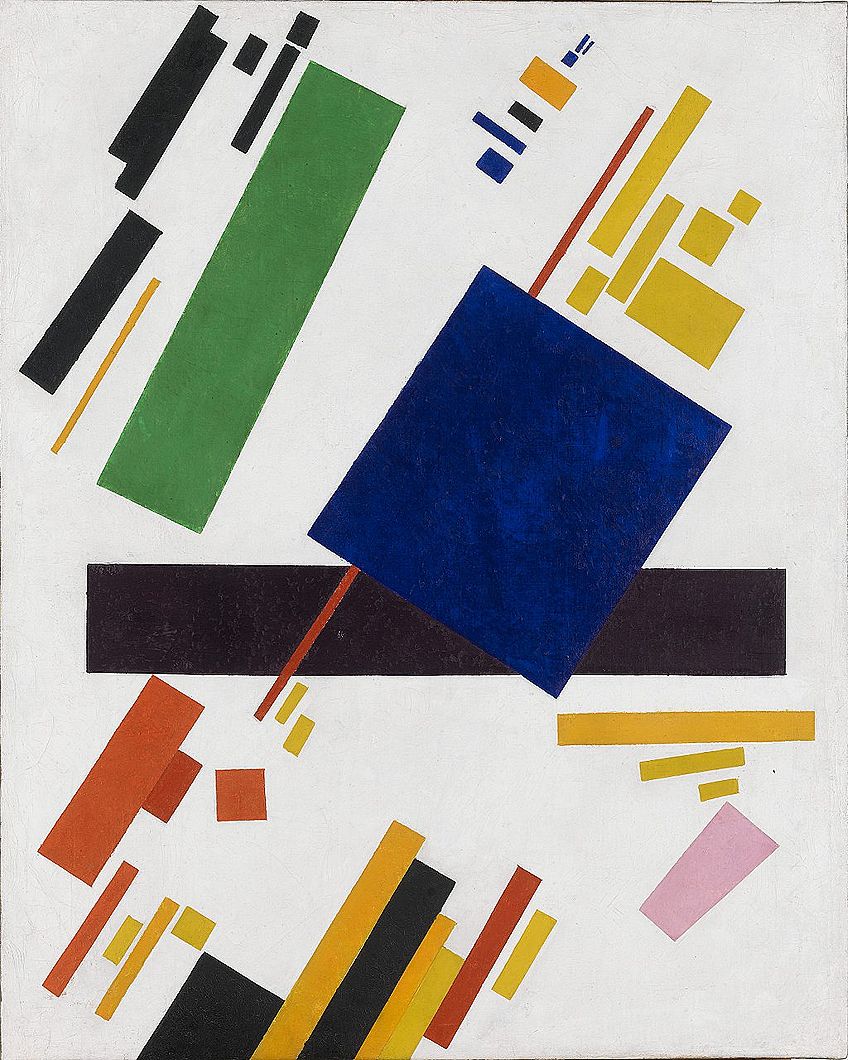
As a pioneer of geometric abstract art, Malevich experimented mainly with squares, triangles, and circles in the numerous artworks he created. While he stated that his paintings were merely compositions of flat, abstracted sections of paint, they were able to provide potent and layered symbols and feelings relating to the concepts of time and space. Malevich was seen as more radical than Cubists and Futurists in his approach to Suprematism, as his artworks followed an extremely methodical and calculated approach.
Malevich was said to be a prolific writer in addition to being an artist. His essays on the ideology of art addressed a wide array of theoretical problems related to Abstract Art and its ability to guide our feelings and spirituality within the types of artworks produced.
Despite his prominence, Malevich was forced to abandon Suprematism and return to figurative art in 1924 as Joseph Stalin rose to power. This was because Abstract Art was labeled as a form of decadence that should be repressed, which led to Malevich having to alter his artistic style.
Georgia O’Keeffe (1887 – 1986)
One of the most prolific female Abstract artists was Georgia O’Keeffe, who played a significant role in the development of American modernism and its relationship to the avant-garde artistic movements in Europe. Throughout her career that spanned seven decades, O’Keeffe produced a substantial amount of work that attempted to capture the emotion and strength of objects through abstractions of the natural world.
Existing as one of the first female American Modern artists, O’Keeffe’s abstracted paintings focused on depicting flowers, empty landscapes, and close-up still lives, with these elements going on to become staple images within most American artistic landscape paintings. O’Keeffe’s most iconic artworks, therefore, include these portrayals of flowers, which can be seen in Blue and Green Music (1921), Red Canna (1924), and Black Iris III (1926).
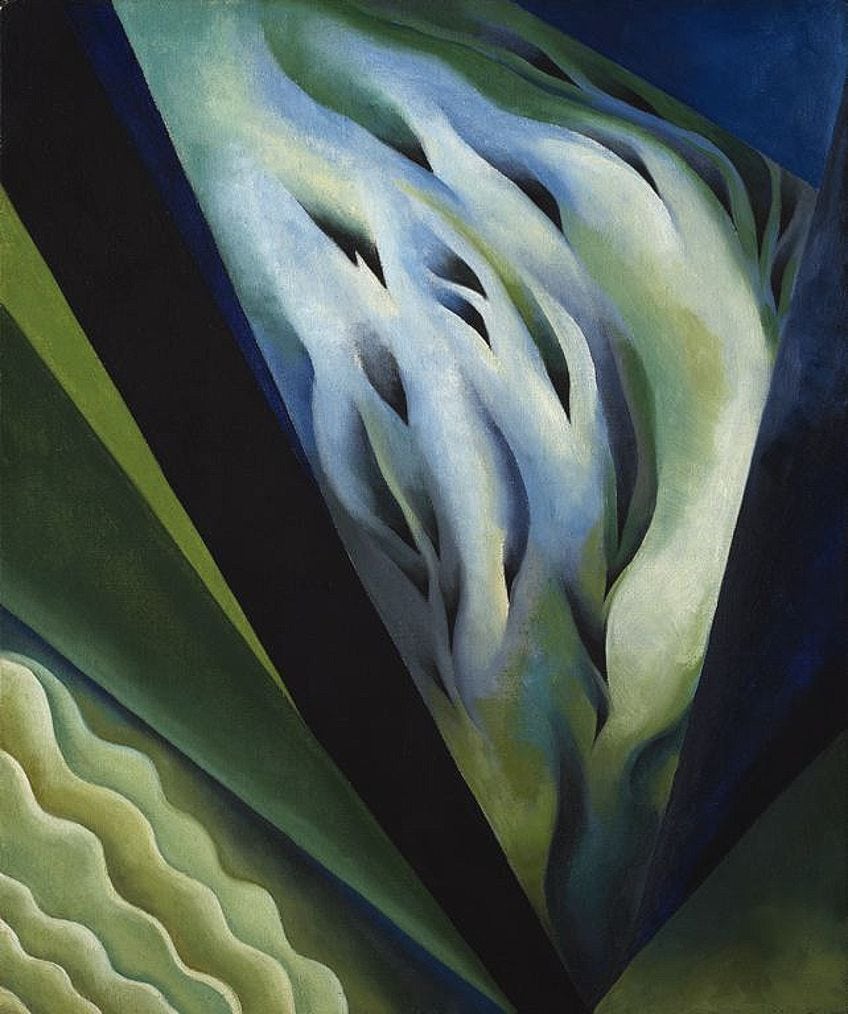
O’Keeffe excelled as an abstract and figurative artist, as she continually contested the boundaries of artistic style within her paintings. She combined aspects of abstraction and representation in her artworks, which demonstrated her intentional deviation from traditional artistic styles towards more innovative forms of expression.
Despite being one of the most influential Abstract painters to come from the movement, O’Keeffe is perhaps more known for her unique depiction of flowers in a sensuous way. Her dramatically large close-ups of flowers gave her artworks an incredibly erotic feel, as they were thought to be representative of the female anatomy. However, O’Keeffe stated that the sensual nature of her pieces was what essentially turned them into abstracted works, as her images had the ability to mimic whatever viewers interpreted them to be.
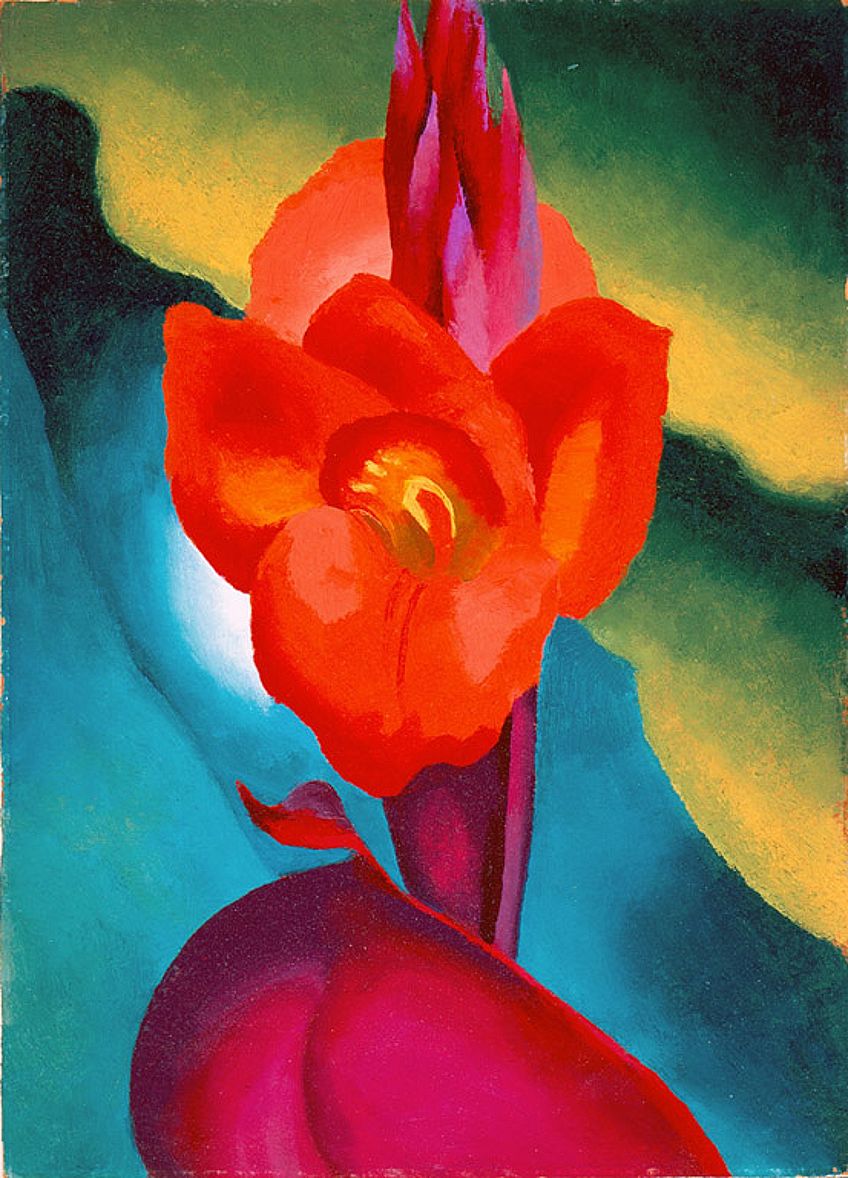
While O’Keeffe did not follow any specific artistic movements when creating art, her experimentation with abstracted motifs within nature was her most profound works. She played around with creating very detailed artworks, as well as artworks that stripped away all unimportant details so as to focus on shape and color. Throughout her numerous artistic explorations, O’Keeffe’s paintings remained grounded in representation, which existed as the common element within all of her artworks made.
If you hope to complete craft projects where you need paint that will work well for any number of surfaces, then craft paint is your go-to! The consistency is smooth, creamy, and easy to use.
Mark Rothko (1903 – 1966)
Competing with fellow artists Jackson Pollock and Willem de Kooning for the title of the most celebrated Abstract Expressionist of all time is Russian-American artist Mark Rothko. Remembered as an important member of the Color Field Painting group, Rothko worked over his entire canvas with paint when creating artwork as opposed to subjecting certain areas to gestural attacks.
Rothko, who was born in Latvia, immigrated to the United States when he was a young child. He initially went to Yale for several years before dropping out, as he believed the institution was both pretentious and racist. It was only after visiting a friend in New York that he began to paint, which led to his move to the city. Rothko went through a number of different styles during his artistic career, including Surrealism, before he started to develop his own personal style. This led to the emergence of Color Field Painting, in which Rothko was the pioneer.
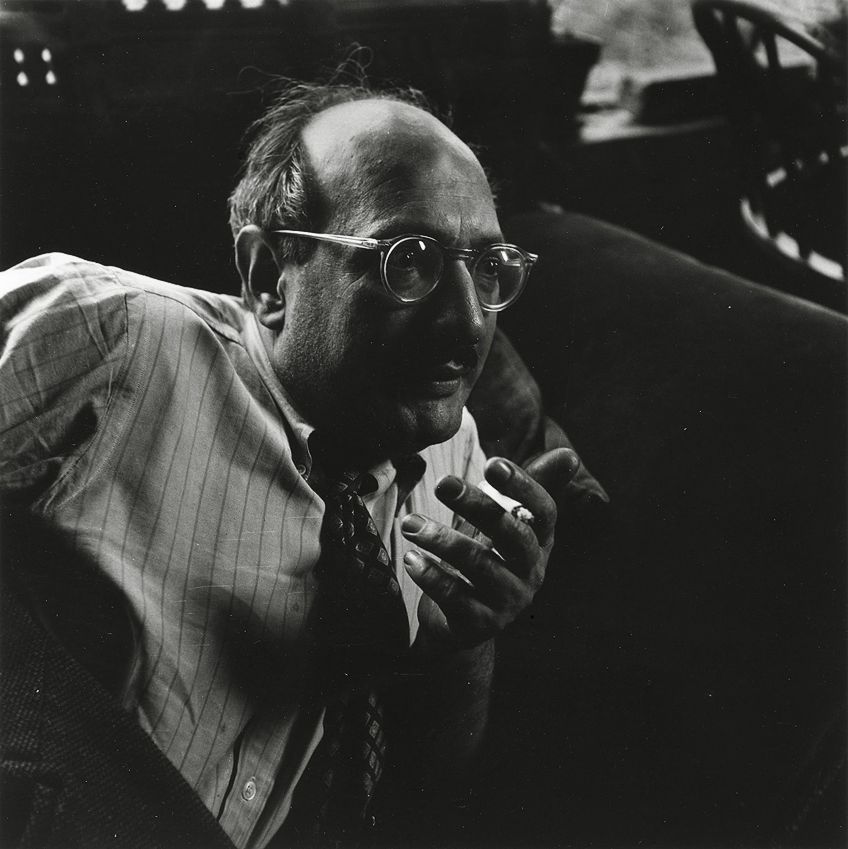
Within his paintings, Rothko focused on creating a magnificent type of geometric abstraction through painting juxtaposing blocks of pure colors next to one another. In a typical Rothko painting, he would depict large blobs of pigment bordering one another to create a comparison between the colors. This style can be seen in the majority of his Abstract artworks from that period, such as No. 10 (1950), No. 21 (Red, brown, black and orange) (1951), Orange, Red, Yellow (1960), and Untitled (Black on Gray) (1970).
Through this contrast, Rothko was able to create visual vibrations through his color choice, which made it seem that his blocks were hovering above the canvas when viewing the artwork. In doing so, a strong emotional response was attributed to each work, as Rothko translated different types of moods into his paintings which provoked different reactions in different viewers.
Rothko found great success as an artist, with his works being exhibited at the Museum of Modern Art as well as being acknowledged in Fortune magazine. This led to much jealousy in his personal relationships, which left Rothko a lonely individual.
Despite his renowned international success, Rothko sadly committed suicide in 1970. His artworks leading up to his death acted as a foreshadow, as his color palette grew increasingly darker with heavier emotions being expressed.
Clyfford Still (1904 – 1980)
Another American artist on our list of Abstract artists is Clyfford Still, who helped elevate Abstract Expressionism into the prominent art movement it became known as. Although not as widely known as his New York School colleagues, Still was the first artist to push through to a modern and drastically abstract style in his artworks that were completely devoid of any and all obvious subject matter.
Still originally produced representational works before he began experimenting with pure abstraction and nonrepresentation during the mid-1940s, which went on to influence his Abstract Expressionist contemporaries to do the same. Within his artworks created, Still made use of expansive fields of bright colors to evoke dramatic conflicts that he believed occurred between man and nature. This style can be seen in his paintings titled PH-973 (1959), PH-971 (1957), and PH-960 (1960).
The dominant theme that existed within Still’s artworks made reference to the existential battle of the human spirit against uncontrollable forces of nature. Still expressed this concept through the vertical and jagged formations that seemed to defiantly confront viewers in most of his large-scale paintings, along with the great juxtaposition of color he created.
Although the reception of his works revolved around the results of his color combinations, Still’s expressed that he never wanted color to be accepted as purely color within his works. This concept was also applied to the texture and shapes in his paintings, as he wanted each element in his artworks to fuse together and create a living energy that could be felt when viewing the works.
Despite his acclaim, Still was an infamously difficult individual to work with, who frequently rejected the New York art scene. He defied the majority of the critiques aimed at his works, which led to him going to great lengths to control how his paintings were exhibited, collected, and even sold.
Willem de Kooning (1904 – 1997)
One of the most well-known Abstract artists of all time was Dutch American artist Willem de Kooning, who went on to establish a distinctly American style of painting in the artworks he created. At the age of 22, de Kooning arrived in New York City after traveling as a stowaway on a boat. He joined the Artists Union in 1934 and began painting murals but had to step away from this project as he was not a lawful citizen. De Kooning was only able to open up his own art studio after he received his citizenship, where he worked until he passed away.
De Kooning experimented with the style of abstraction through distorting figure painting to the point where the forms appeared to be abstract. Due to his captivation with this style, he never completely abandoned the depiction of the human figure within his Abstract artworks. This representation of figures can be seen in some of his most notable works, such as Woman I (1952), Woman III (1953), and Interchange (1955).
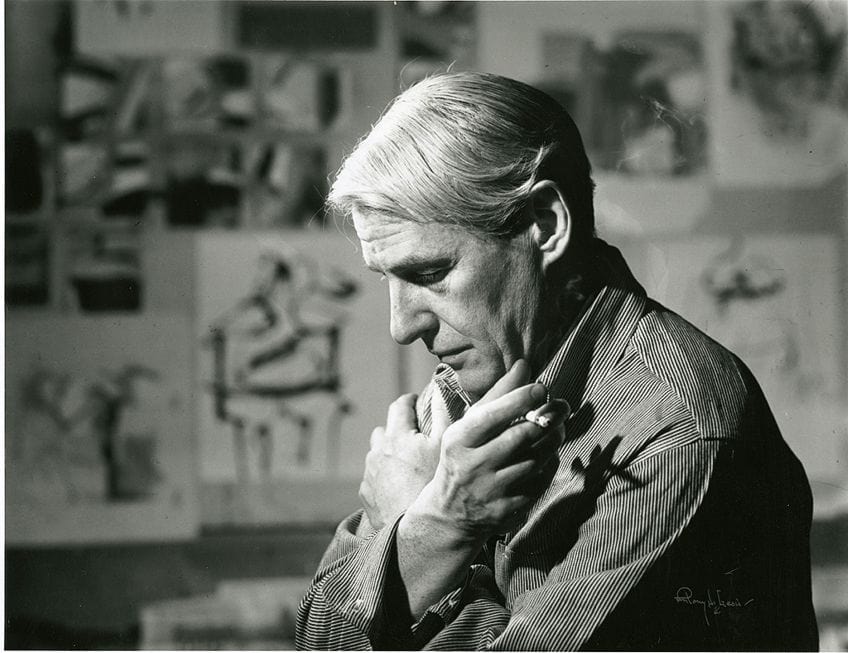
His abstract paintings differed from most of his colleagues, as he continued to make reference to the human form through his abstractions. De Kooning favored depicting the woman figure, with these paintings emphasizing his unique combination of gestural abstraction and figuration. De Kooning was also greatly impacted by Pablo Picasso’s Cubist artworks, which led to him experimenting with ambiguously blending figures and ground within his own paintings, as well as dismembering, reassembling, and distorting his figures in the process.
Most of de Kooning’s earlier paintings consist of female figures that were portrayed using geometric and abstract elements. It was only later in his career that he switched to more abstracted imagery within his artworks. Despite de Kooning embracing the popular image of the masculine, boozy artist, he approached art with gentle and careful thought and was viewed as one of the most intelligent artists associated with the New York School.
The prominence associated with de Kooning has led to his paintings frequently being sold for historical prices. “Woman III” (1953) was sold for $137.5 million in 2006, while “Interchange” (1955) was sold for $300 million in 2015, which was the highest price ever paid for a painting at the time.
Franz Kline (1910 – 1962)
American artist Franz Kline was best known for his involvement within the Abstract Expressionist movement and was considered to be one of the greatest Action Painters of his time. Although he explored the same concepts in his artworks as other Abstract artists, Kline’s work remains incredibly distinct and well-respected ever since the 1950s.
Kline was best known for his large black and white paintings that confidently made use of abstract motifs, as well as fluid and thick brushstrokes that often intersected, overlapped, and interacted with one another. This style can be seen in his iconic artworks, such as Mahoning (1956), Untitled (1957), and Blueberry Eyes (1959 – 1960). Within these artworks, Kline made use of his distinctive gestural brushstrokes, which invoked a lot of emotion into his paintings.
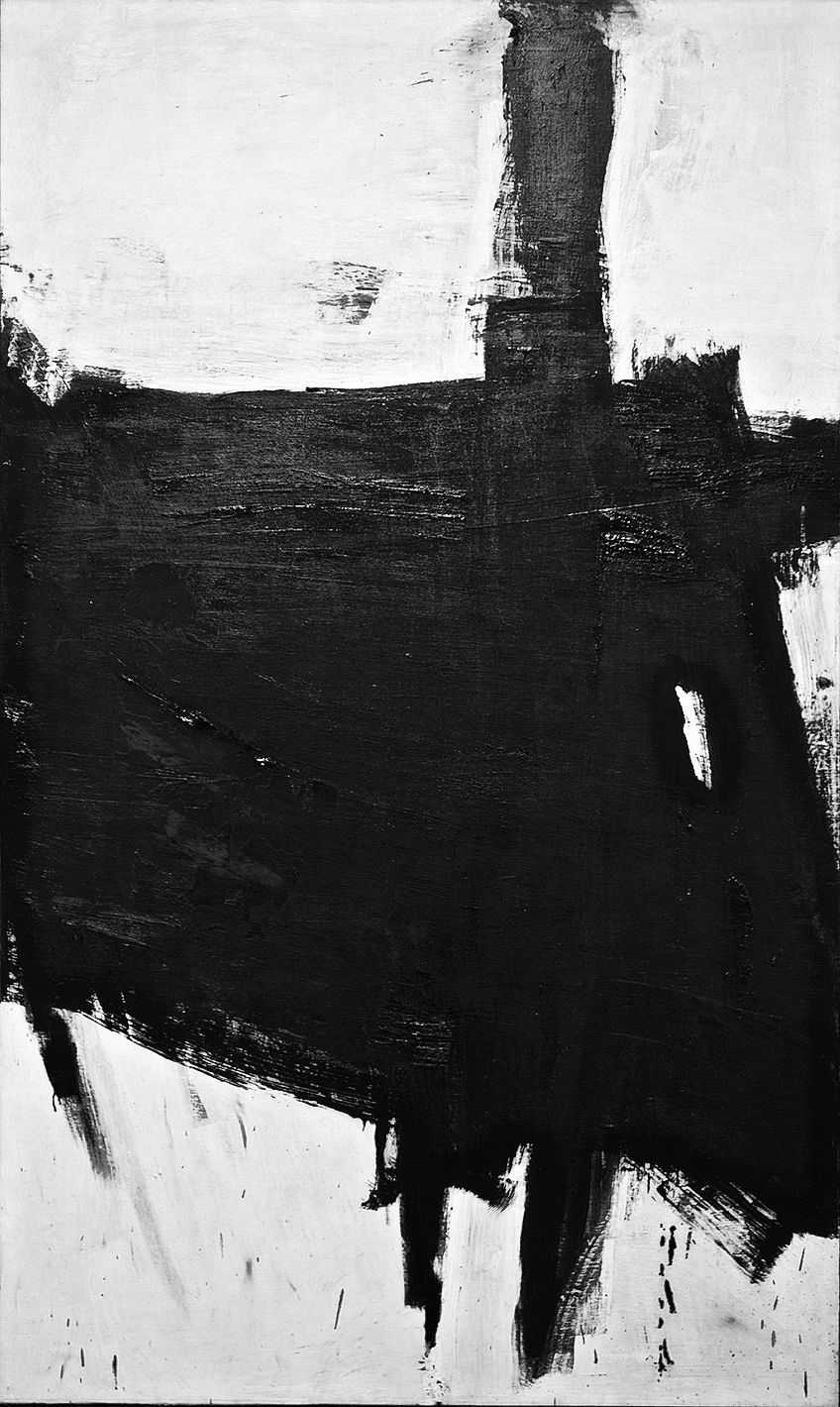
Beginning his artistic career as a realist, Kline developed a fluent style which he perfected throughout his academic training and admiration of Old Masters of traditional art. However, after moving to New York City and meeting Willem de Kooning, his style began to evolve into his signature abstract approach for which he is known.
With artworks ranging from black-and-white pieces that experimented with negative space to vivid compositions that were incredibly dynamic and filled with energy, Kline’s artworks illustrated his evolving aesthetic as his career went on. His abstractions, especially his neutral works, went on to be likened to the cityscapes of New York, the landscape surrounding his childhood home, and Japanese calligraphy.
Kline’s unwillingness to attribute any hidden and subtle meanings to his artworks was an interesting stance to take, as this meant his works could be recommended to later generations of Abstract artists without predetermined and possibly outdated meanings.
By the end of his life, Kline had achieved great international acclaim for his unusual approach to gestural abstraction, with his style going on to influence the minds of countless Minimalist artists.
Jackson Pollock (1912 – 1956)
One of the most iconic Abstract painters of all time, whose name is synonymous with the entire Abstract Expressionist movement, is American artist Jackson Pollock. Inspired by the idea of spontaneous creation and energetic compositions, Pollock went on to develop one of the most notable art techniques to come out of the movement, known as drip painting. To produce his signature drip paintings, Pollock would drip, pour, and splash paint onto large canvases that were set up on the floor, allowing him complete access to the entire canvas.
At 18 years old, Pollock moved to New York City where he was introduced to liquid paint techniques, which began to experiment with. This led to the eventual creation of his infamous “drip paint” technique, whereby he painted canvases laid flat on the floor using his whole body at multiple angles. Drip painting went on to popularize the term “Action Painting” during Abstract Expressionism, which referred to the physical act of painting itself being seen as an important aspect of the completed work.
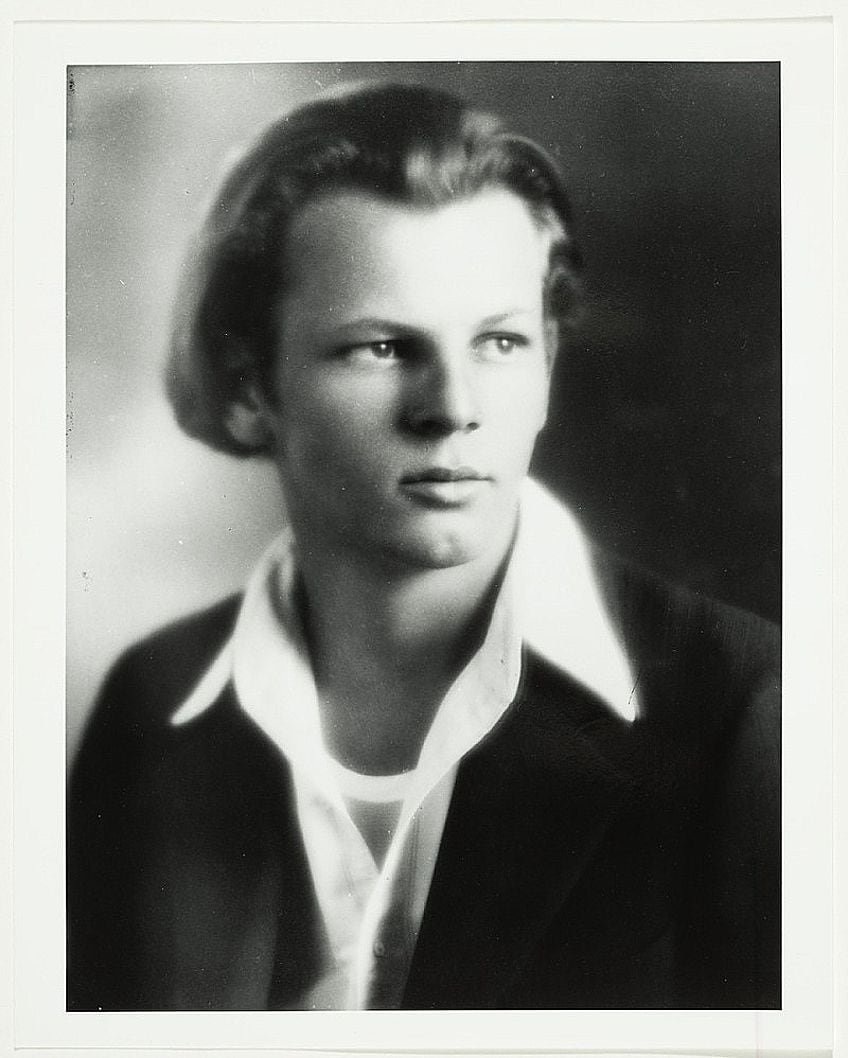
A series of influences within Pollock’s life led to his creation of drip painting. Prior to his iconic artworks, Pollock was painting realist murals during the 1930s, which demonstrated to him the power of painting on a large scale. Additionally, Surrealism encouraged his exploration of the unconscious which can be deduced in his later works, with Cubism guiding his understanding of the picture space and how it should be used.
Seen as America’s first significant postwar artist and subsequent its greatest, Pollock went on to make use of this gestural paint application technique in all of the notable artworks he produced. His unique style can be seen in all of his works, including Number 5 (1948), One: Number 31 (1950), and Number 11 (Blue Poles) (1952).
The paintings created using his drip painting technique led to Pollock becoming an incredibly famous artist. However, at the height of his fame, he abandoned this technique in an attempt to create a blend of abstraction and figures in new series of artworks. These paintings proved to be wildly unpopular in comparison to his drip paintings, as none of them ever sold.
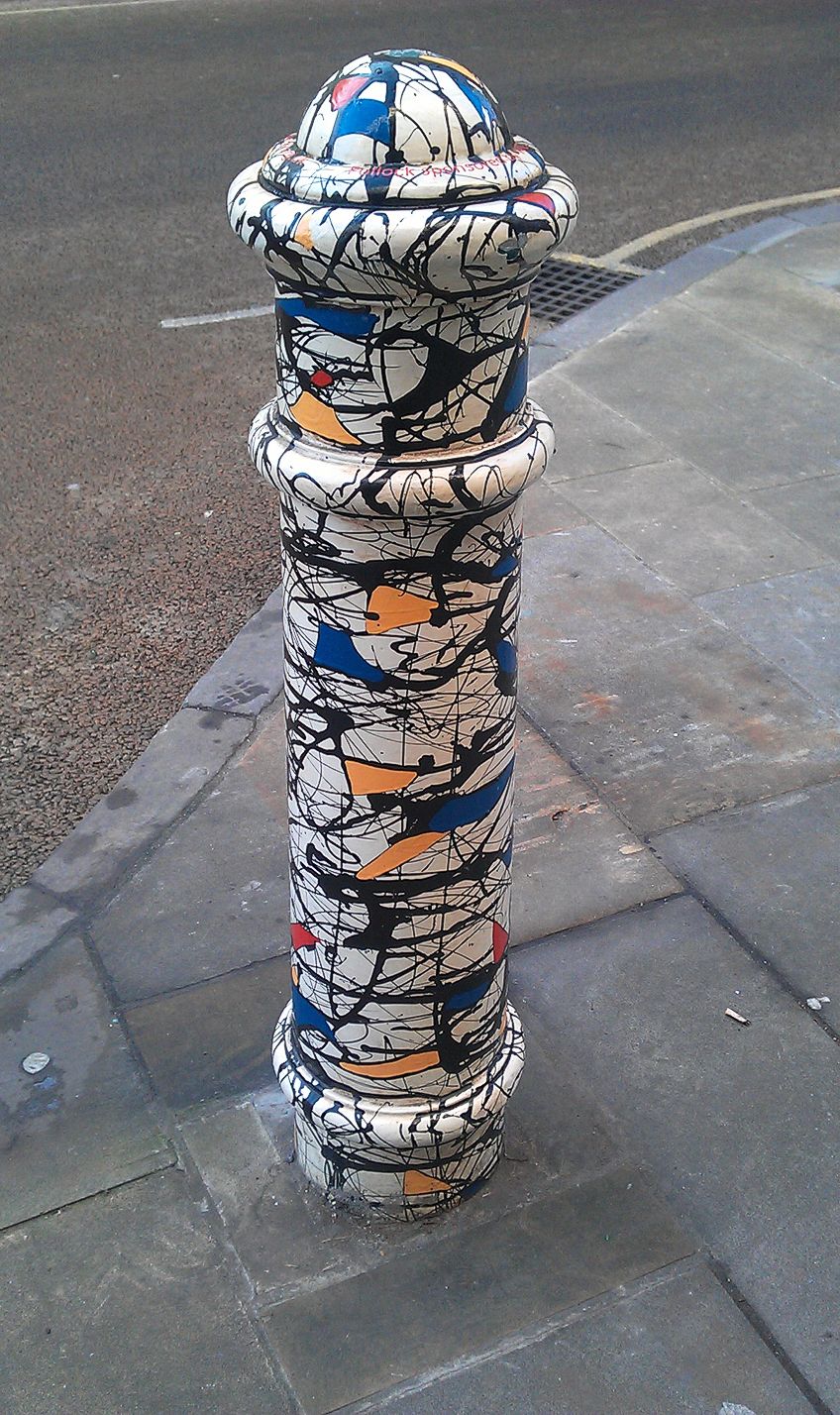
Pollock went on to develop one of the most radical abstract styles that have ever been seen in the history of Modern Art. His detachment of line and color and his redefinition of the concepts of painting and drawing found new meaning to the pictorial space, which has been expanded on ever since.
The drip paintings he produced in the late 1940s represent one of the most innovative bodies of work of the entire century, with Pollock achieving a level of fame that remained unmatched until the appearance of fellow artist Andy Warhol in the 1960s.
Thus, in addition to Pollock being considered the most famous Abstract Expressionist artist to exist, he is also considered to be one of the leading figures of 20th-century art as a whole.
Helen Frankenthaler (1928 – 2011)
Another prominent female on the list of Abstract artists is American painter Helen Frankenthaler, who rose to fame during the Abstract Expressionist movement. considered to be one of the most influential painters of the 20th century, Frankenthaler invented a technique known as the Soak Stain technique that cemented her status as an outstanding artist. Within this technique, Frankenthaler poured thinned paint directly onto unprepared canvases and allowed the paint to seep through in order to produce luminous washes of color.
Beginning her career at an early age, Frankenthaler was introduced to major artists like Robert Motherwell, Jackson Pollock, and Franz Kline, whose practices influenced her view of Abstract Expressionism. Through viewing artworks considered to be iconic Abstract works, Frankenthaler began to develop her own distinct approach to the style, which led to the emergence of her Soak Stain technique. Her breakthrough in the art world gave rise to the emergence of Color Field Painting, within which she was a pioneering member.
Frankenthaler’s compositions were airy in nature, as they depicted celebrations of the pleasures related to the use of pure color in an abstracted yet gentle sense. This style can be seen in most of her notable artworks, including Mountains and Sea (1952), Canyon (1965), Savage Breeze (1974), and Madame Butterfly (2000).
After experimenting with both phosphorescent and misty compositions that were dominated by great areas of organic color, Frankenthaler turned her attention to other artistic mediums. She began exploring the versatility of woodcuts, upon which she was able to achieve the characteristics of painting through replicating the effects of her infamous Soak Stain technique.
Frankenthaler was seen as a unique Abstract modern artist due to the focus she placed on natural landscapes, which she often emulated in her works.
Rather than create artworks that explored existential confrontation, Frankenthaler produced gentle and dreamlike abstractions of nature and the sublime. With a lengthy career that ranged numerous generations of Abstract painters, Frankenthaler went on to exhibit her work for over six decades while she continued to produce crucial and ever-changing artworks.
Many famous Abstract artists emerged from this period of creation during the 20th century, which led to the creation of many iconic artworks that are still spoken about today. If you have enjoyed going through our list of Abstract artists, we encourage you to further explore other Abstract painters who might not be as well-known but still significant within their own right.
We’ve created also an abstract artist web story.
Isabella studied at the University of Cape Town in South Africa and graduated with a Bachelor of Arts majoring in English Literature & Language and Psychology. Throughout her undergraduate years, she took Art History as an additional subject and absolutely loved it. Building on from her art history knowledge that began in high school, art has always been a particular area of fascination for her. From learning about artworks previously unknown to her, or sharpening her existing understanding of specific works, the ability to continue learning within this interesting sphere excites her greatly.
Her focal points of interest in art history encompass profiling specific artists and art movements, as it is these areas where she is able to really dig deep into the rich narrative of the art world. Additionally, she particularly enjoys exploring the different artistic styles of the 20th century, as well as the important impact that female artists have had on the development of art history.
Learn more about Isabella Meyer and the Art in Context Team.
Cite this Article
Isabella, Meyer, “Abstract Artists – Who Were the Most Famous Abstract Artists?.” Art in Context. May 27, 2021. URL: https://artincontext.org/abstract-artists/
Meyer, I. (2021, 27 May). Abstract Artists – Who Were the Most Famous Abstract Artists?. Art in Context. https://artincontext.org/abstract-artists/
Meyer, Isabella. “Abstract Artists – Who Were the Most Famous Abstract Artists?.” Art in Context, May 27, 2021. https://artincontext.org/abstract-artists/.


